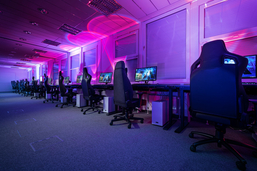Why Mahjong Is the Coolest New Hobby for Millennials and Gen Z
Mahjong is having a moment - and not the kind you’d expect. Once seen as a quiet pastime for older generations, it’s now being rediscovered by millennials and Gen Z as a perfect mix of relaxed strategy and low-pressure social play. This is no dusty tradition. It’s a sharp, addictive hobby that feels just as natural on your Android screen as it once did on carved wood tables. And for those curious to try it, you can play right here with others online in real time. Check and you will see that the game is more than just matching tiles; it’s about reading the table, spotting patterns, and anticipating moves. It’s strategic, a little sneaky, and far more fun than anyone told you.
A Classic Game With a Fresh Face
Mahjong is gaining traction among younger players not out of nostalgia, but because of its layered mechanics. It rewards focus, planning, and the ability to read the table - skills familiar to anyone who enjoys tactical board games or strategy-based mobile apps. Each round presents a new puzzle, and progress depends less on chance and more on careful observation and decision-making.
Today’s Mahjong looks different than it did a decade ago. Android versions come with sharp visuals, clean interfaces, and themes that range from minimalist to futuristic. Developers haven’t changed the rules, just the presentation. The result is a game that feels both familiar and new, designed to match modern habits without losing its depth.
It’s Actually More Competitive Than You Think
What makes Mahjong stand out from other casual games is the strategic control it demands. While the visual appeal might draw players in, it's the competitive depth that keeps them coming back. Behind every discarded tile is a decision, and advanced players learn to anticipate opponents' hands as much as manage their own. This mental chess is what places Mahjong closer to poker than to luck-based games.
Competitive play has evolved beyond local clubs. Online platforms now host ranked matches, timed challenges, and global leaderboards. In regions like Japan and South Korea, digital Mahjong tournaments attract large followings, and Western players are increasingly joining in with Canada even hosting Mahjong world championship in 2024. In any case, for those looking for a slow-burn challenge with real skill progression, Mahjong delivers, all generations included.
From Coffee Shops to App Stores: Where Mahjong Lives Now
The modern Mahjong revival isn’t confined to screens. In cities across Europe, the US, and Southeast Asia, Mahjong is making its way into cafés, coworking spaces, and board game lounges. These venues host regular sessions where friends, or strangers, can play in relaxed, social settings. It's part of a wider trend where traditional games are reappearing in physical spaces once dominated by laptops and lattes.
At the same time, the Android app market offers dozens of Mahjong platforms tailored to different preferences. Mahjong Soul blends classic gameplay with anime aesthetics, while Mahjong Time focuses on international rules and real-time matches. This dual presence - online and offline - has helped Mahjong stay visible, accessible, and more relevant than ever.
Why Gen Z and Millennials Are Actually Built for Mahjong
Mahjong’s appeal to younger generations extends beyond aesthetics and strategy - it also offers cognitive benefits. A study on effects of Mahjong published in Frontiers in Psychology found that children participating in Mahjong classes showed increased Processing Speed Index (PSI) scores on the WISC-IV intelligence test, suggesting enhanced cognitive processing abilities. This indicates that engaging with Mahjong can support cognitive development, a valuable asset for individuals in high-stimulus environments.
For millennials and Gen Z, constantly navigating multitasking and information overload, Mahjong provides a structured yet flexible mental workout. The game's requirement for sustained attention, pattern recognition, and strategic planning aligns well with the cognitive demands faced by these generations. Moreover, the game's adaptability -offering both solo and multiplayer modes - caters to diverse social preferences, making it an ideal choice for those seeking both mental stimulation and social interaction.
It’s Social – Without Being Exhausting
Mahjong fits naturally into the kind of socializing many younger players prefer: low-pressure, focused, and meaningful. Unlike fast-paced multiplayer games that demand constant input, the game allows for shared presence without overstimulation. You can play while having a conversation, listening to music, or simply enjoying the rhythm of the game. It’s structured enough to engage, yet calm enough to feel restorative.
This balance is part of why Mahjong is thriving among introverts, casual gamers, and anyone burned out on high-speed digital experiences. With options for solo play, small group sessions, or online matchmaking, it meets players where they are. It offers a connection - to people, to culture, and to something slower - without asking for more than you’re ready to give. A perfect retreat for minds that want to slow down without switching off.
To read the latest guides, news, and features you can visit our Other Game Page.





